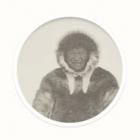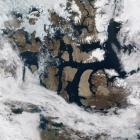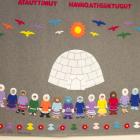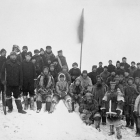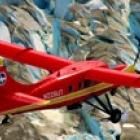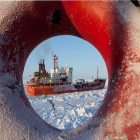Further Reading
History
Sovereignty
Security
Resources
What follows is a selected bibliography and reference list on the Arctic and the Northwest Passage. The list is not comprehensive, but is intended merely as a primer for readers looking to better familiarize themselves with the issue. As this exhibition is original in its multimedia perspective, I have focused this bibliography on books, papers, and resources available online. There are many books that will be of interest, however, which are not cited here.
History
The huge body of literature on the Northwest Passage bears witness to its importance. Four centuries of exploration have been documented, described, and narrated by protagonists, historians, and poets. The effect of this allure is an impressive range of works that have been constantly increasing in number. As a first orientation in this sea of information, one of the essential references is the Alan Edwin Day’s comprehensive Search for the Northwest Passage: An Annotated Bibliography (New York: Garland, 1986), and his more recent Historical Dictionary of the Discovery and Exploration of the Northwest Passage (Lanham, MD: Scarecrow, 2006).
Probably the most useful bibliographical information regarding the people of Canadian history, such as indigenous people, explorers, and politicians, can be found in the Dictionary of Canadian Biography, which is also available in an online version.
Another easily accessible source of information about Canadian history is the three-volume The Historical Atlas of Canada (Toronto: University of Toronto Press, 1987–1993). It is possible to explore major theme maps online, thanks to the Online Learning Project.
The arguably pivotal reference for amateurs and students of the North and its geographical discovery is Derek Hayes’s Historical Atlas of the Arctic (Seattle: University of Washington Press, 2003). The book, which includes more than three hundred stunning maps, provides an account of the expeditions as well as of the geographical notions that motivated historical maps.
For those passionate about the subject, a massive literary production is available in the form of historiographical, travel, autobiographical, and fictional writings on the experience of Arctic explorations. A number of logbooks, journals, and memoirs on this topic are accessible freely online at the Open Library Project; some are mentioned in the timeline linked to this exhibition.
In addition, the following is a very short selection of relatively recent publications that were particularly useful for this project: Shelagh Grant, Polar Imperative: A History of Arctic Sovereignty in North America (Vancouver: Douglas and McIntyre, 2010); John McCannon, A History of the Arctic: Nature, Exploration and Exploitation (Chicago: UCP, 2012); Robert McGhee, The Last Imaginary Place: A Human History of the Arctic World (Chicago: UCP, 2007); and Glyn Williams, Arctic Labyrinth: The Quest for the Northwest Passage (London: Penguin, 2009).
The attention paid to Inuit Qaujimajatuqangit and Sila is demonstrated by the huge number of related texts: Frank James Tester and Peter Irniq, “Inuit Qaujimajatuqangit: Social History, Politics and the Practice of Resistance,” ARCTIC 61, no. 5 (August 2009): 48–61; Timothy B. Leduc, “Sila Dialogues on Climate Change: Inuit Wisdom for a Cross-cultural Interdisciplinarity,” Climatic Change 85, no. 3–4 (December 2007): 237–50; National Collaborating Centre for Aboriginal Health, Inuit Qaujimajatuqangit, “The Role of Indigenous Knowledge in Supporting Wellness in Inuit Communities in Nunavut,” fact sheet published online 2012. Information about Arctic Resilience can be found in the Arctic Resilience Interim Report 2013, Stockholm Environment Institute and Stockholm Resilience Centre, Stockholm.
Sovereignty
The importance of the Arctic in Canadian and international politics is also demonstrated by the numerous studies on the topic. Once considered a strictly Canadian legal conjecture, in the last two decades the sovereignty issue has been one of the major geopolitical discussions about the North. For this reason the massive range of Canadian publications concerning the Cold War period are useful. Franklyn Griffiths’s works represent an important resource, for example: Griffiths, A Northern Foreign Policy (Toronto: Canadian Institute of International Affairs, 1979); Griffiths, “On This Day, Grab a Cold One and Think Pan-Arctic Thoughts,” The Globe and Mail, 30 June 2009; Griffiths, “Towards a Canadian Arctic Strategy,” Foreign Policy for Canada no.1, Canadian International Council, 2009; Griffiths, ed., Politics of the Northwest Passage (Kingston & Montreal: McGill-Queen’s University Press, 1987); Griffiths, ed., Arctic Alternatives: Civility or Militarism in the Circumpolar North (Toronto: Science for Peace/Samuel Stevens, 1992). A vast publication documenting all the different point of views is also available in Shelagh Grant, Polar Imperative (Vancouver: Douglas and McIntyre, 2010) and Grant, “The Weight of History in the Arctic,” Canadian International Council, OpenCanada.org Canada’s Hub for International Affairs, 25 Febuary 2013.
On East Asia’s Arctic interests see P. Whitney Lackenbauer and James Manicom, “Canada’s Northern Strategy and East Asian Interests in the Arctic.” East Asia-Arctic Relations Paper no. 5, Centre for International Governance Innovation, 2014.
Very important, too, is the Native perspective. One source is the compendium by Inuit Qaujisarvingat, an association focused on ensuring an increasingly active role for Inuit in research and generating innovative knowledge for improved research, science, and policy-making; it is published by Inuit Tapiriit Kanatami, Inuit Qaujisarvingat, Nilliajut: Inuit Perspectives on Security, Patriotism and Sovereignty (Ottawa, 2013).
On the impact of residential schools on Natives’ traditional knowledge and system of life, a very important source is the publication by the Truth and Reconciliation Commission established by the Canadian Government in 2008. Government and religious bodies have partnered programs to assist school survivors, to create a public and historical record of this period, and to promote public awareness, understanding, and education of the history and legacy of residential schools; these include the Legacy of Hope Foundation (LHF), a national Aboriginal charitable organization, Where are the Children?, and Historical Sketch for Anglican Residential Schools. The history and effects of the High Arctic relocation is a relatively new topic: a very important source of information is the Qikiqtani Truth Commission (QTC), established and financed by the Qikiqtani Inuit Association to create a more accurate history of the decisions and events that affected Inuit living in the Baffin Region from 1950 to 1975 and to document their impact on Inuit life. The final report is an outstanding document for research purposes. Important, too, is the history and meaning of the Arctic Exile Monument Project commissioned by Nunavut Tunngavik Inc. to two Nunavut carvers, Simeonie Amagoalik of Resolute Bay and Looty Pijamini of Grise Fiord. Using local stone, Amagoalik created a carving of a man in Resolute Bay. Pijamini created a granite carving of a woman and child in Grise Fiord. The monuments depict how families were separated during relocation.
For weekly information about articles and news in the media, check The Arctic This Week newsletter published by the Arctic Institute, an interdisciplinary, independent think tank focused on Arctic policy issues.
The high relevance ascribed by the Canadian government to sovereignty issues is shown by the variety of research projects it has funded, such as the Foreign Affairs and International Trade Canada—Northern Dimension of Foreign Policy; Canadian Polar Commission; Arctic Institute of North America; Canadian Circumpolar Institute; and ArcticNet, a network that brings together scientists and managers in the natural sciences, human health, and social sciences, with their partners from Inuit organizations, northern communities, federal and provincial agencies, and the private sector.
Another source of information on Arctic politics and environment is the Arctic Council website, which has a rich documents section.
Security
Security concerns connected to the Arctic and the Northwest Passage during the Cold War era are analyzed by several authors. Accessible online, recommended sources include the works of P. Whitney Lackenbauer and Robert N. Huebert: Lackenbauer, ed., Canadian Arctic Sovereignty and Security: Historical Perspectives, Calgary Papers in Military and Strategic Studies, no. 4 (2001); Lackenbauer, “The Military as Nation Builder: The Case of the Canadian North,” Journal of Military and Strategic Studies 15, no. 1 (2013): 1–34; Lackenbauer, “From Polar Race to Polar Saga: An Integrated Strategy for Canada and the Circumpolar World,” Foreign Policy for Canada’s Tomorrow 3 (2009). Further reading on the arguments include: Lackenbauer, “Further Reading,” Calgary Papers in Military and Strategic Studies, no. 4 (2011): 437–46; Adam Lajeunesse, “Lock, Stock, and Icebergs? Defining Canadian Sovereignty from Mackenzie King to Stephen Harper,” Calgary Papers in Military and Strategic Studies, no. 1 (2008): 1–14; Lajeunesse, “Claiming the Frozen Seas: The Evolution of Canadian Policy in Arctic Waters,” Calgary Papers in Military and Strategic Studies, no. 4 (2011): 233–59; Lajeunesse, “The Distant Early Warning Line and the Canadian Battle for Public Perception,” Canadian Military Journal 8, no. 2 (Summer 2007): 51–59; Robert N. Huebert, “Climate Change and Canadian Sovereignty in the Northwest Passage,” Calgary Papers in Military and Strategic Studies, no. 4 (2011): 383–400; David VanderZwaag, Robert N. Huebert, and Stacey Ferrara, “The Arctic Environmental Protection Strategy, Arctic Council and Multilateral Environmental Initiatives: Tinkering while the Arctic Marine Environment Totters,” Denver Journal of International Law and Policy 30, no. 131 (2001): 131–71; Robert N. Huebert, Heather Exner-Pirot, Adam Lajeunesse, and Jay Gulledge, Climate Change & International Security: The Arctic as a Bellwether (Arlington, Virginia: Center for Climate and Energy Solutions, 2012).
On submarine activity under the Arctic ice, see Adam Lajeunesse, “A Very Practical Requirement: Under-Ice Operations in the Canadian Arctic, 1960–1986,” Cold War History 13, no. 4 (2013): 507–24, and on the passage of the SS Manhattan see Ross Coen, Breaking Ice for Arctic Oil: The Epic Voyage of the SS Manhattan through the Northwest Passage (Fairbanks: University of Alaska Press, 2012); and Matthew Willis, “The Manhattan Incident Forty Years On: Re-assessing the Canadian Response,” Calgary Papers in Military and Strategic Studies, no. 4 (2011): 259–82; the 1969 report by CBC journalist Norman DePoe is available at the CBC archive and Sun Ship Historical Society’s website, where some information about the history and the characteristics of this tanker is stored .
On the history of the DEW Line, Lynden T. Harris’s comprehensive website, The DEW Line Chronicles, is essential, and for a list of major archival collections with materials related to the DEW Line, consult P. Whitney Lackenbauer, Matthew Farish, and Jennifer Arthur-Lackenbauer, The Distant Early Warning (DEW) Line: A Bibliography and Documentary Resource List.
In addition, several articles on the DEW Line and the Cold War Arctic are useful: Daniel Heidt and P. Whitney Lackenbauer, “Sovereignty for Hire: Civilian Airlift Contractors and the Distant Early Warning (DEW) Line, 1954–1961,” in De-icing Required! The Historical Dimension of the Canadian Air Force’s Experience in the Arctic, edited by P. Whitney Lackenbauer and W. A. March, 95–112 (Ottawa: National Defense, 2012); and Alexander Herd, “A Practicable Project: Canada, the United States, and the Construction of the DEW Line,” Calgary Papers in Military and Strategic Studies, no. 4 (2011): 171–200.
For further information on recent studies of the impact of the military presence in the Arctic on environment and society, see P. Whitney Lackenbauer and Matthew Farish, “The Cold War on Canadian Soil: Militarizing a Northern Environment in Environmental History,” Environmental History 12, no. 4, Special Issue on Canada (Oct. 2007): 920–50; and P. Whitney Lackenbauer and Ryan Shackleton, “Inuit-Air Force Relations in the Qikiqtani Region During the Early Cold War,” in De-icing Required! The Historical Dimension of the Canadian Air Force’s Experience in the Arctic, edited by P. Whitney Lackenbauer and W. A. March, 73–94 (Ottawa: National Defense, 2012). There also is an RCC Perspectives article dealing with national parks and Nunavut; see Claire Elizabeth Campbell, “Pragmatism and Poetry: National Parks and the Story of Canada.” RCC Perspectives 2011, no 4.
On the role of climate in Canadian and global history, listen to the podcast by Sean Kheraj, Stacy Nation-Knapper, and Andrew Watson, “Episode 31: Histories of Canadian Environmental Issues, Part 1 – Global Warming,” Nature’s Past, 26 September 2012.
Resources
On the importance of developing more infrastructure in the Arctic and the Northwest Passage in order to form an alternative to a Russian monopoly, see John Higginbotham, “Nunavut and the New Arctic,” Policy Brief 27, Centre for International Governance Innovation, 2013; and Higginbotham, “What’s in Store for the Arctic?” CIGI Global Security Research Project on Arctic Governance. On the influence of extracting resources on relations between indigenous and non-indigenous peoples see Mark Nuttall, Pipeline Dreams: People, Environment, and the Arctic Energy Frontier, International Work Group for Indigenous Affairs, 2010.
On the role of traditional knowledge in existing governance arrangements in the Arctic see Terry Fenge and Bernard W. Funston, “Arctic Governance: Traditional Knowledge of Arctic Indigenous Peoples from an International Policy Perspective,” Arctic Governance Project, 2009; and Cecile Pelaudeix, “Inuit Governance in a Changing Environment: A Scientific or a Political Project?,” in What Holds The Arctic Together?, edited by Cecile Pelaudeix, Alain Faure, and R. Griffiths, 67–83 (Paris: L’Harmattan, 2012).
On Inuit perspectives, fears, and expectations, see the website of the Inuit (ITK), the national Inuit organization in Canada, representing four Inuit regions: Nunatsiavut (Labrador), Nunavik (northern Quebec), Nunavut, and the Inuvialuit settlement region in the Northwest Territories.
Analysis of the impact of mining activity on Inuit society can be found in Gérard Duhaime, Nick Bernard, Pierre Fréchette, Marie-Annick Mallé, Alexandre Morin, and Andreé Caron, “The Mining Industry and the Social Stakes of Development in the Arctic,” Online Research Collection, Université Laval, 2002; Christine Cleghorn, “Aboriginal Peoples and Mining in Canada: Six Case Studies,” Mining Watch Canada, 1 September 1999; Roy Kwiatkowski and Maria Ooi, “Integrated Environmental Impact Assessment: A Canadian Example,” Bulletin of the World Health Organization 81, no. 6 (2002): 434–48. The Canadian Women’s Foundation provides information on the impact that resource extraction is having on Inuit women and their families in the Qamani’tuaq region of Nunavut. On the impact of climate change on Nunavut, see “Unikkaaqatigiit: Putting the Human Face on Climate Change Perspectives from Inuit in Canada” published in partnership between ITK, Inuvialuit Regional Corporation, Nunavut Tunngavik Incorporated, Makivik Corporation, Labrador Inuit Association, the Nasivvik Centre for Inuit Health, the Changing Environments program at Laval University, the Ajunnginiq Centre at the National Aboriginal Health Organization, and communities across the Arctic. Other resources can be found in Kenyon Bolton, Martin Lougheed, James Ford, Scot Nickels, and Carrie Grable, What We Know, Don’t Know, and Need to Know about Climate Change in Inuit Nunangat: A Systematic Literature Review and Gap Analysis of the Eastern Arctic (Ottowa: Inuit Tapiriit Kanatami, 2011); and from the website The Nunavut Climate Change Centre.



